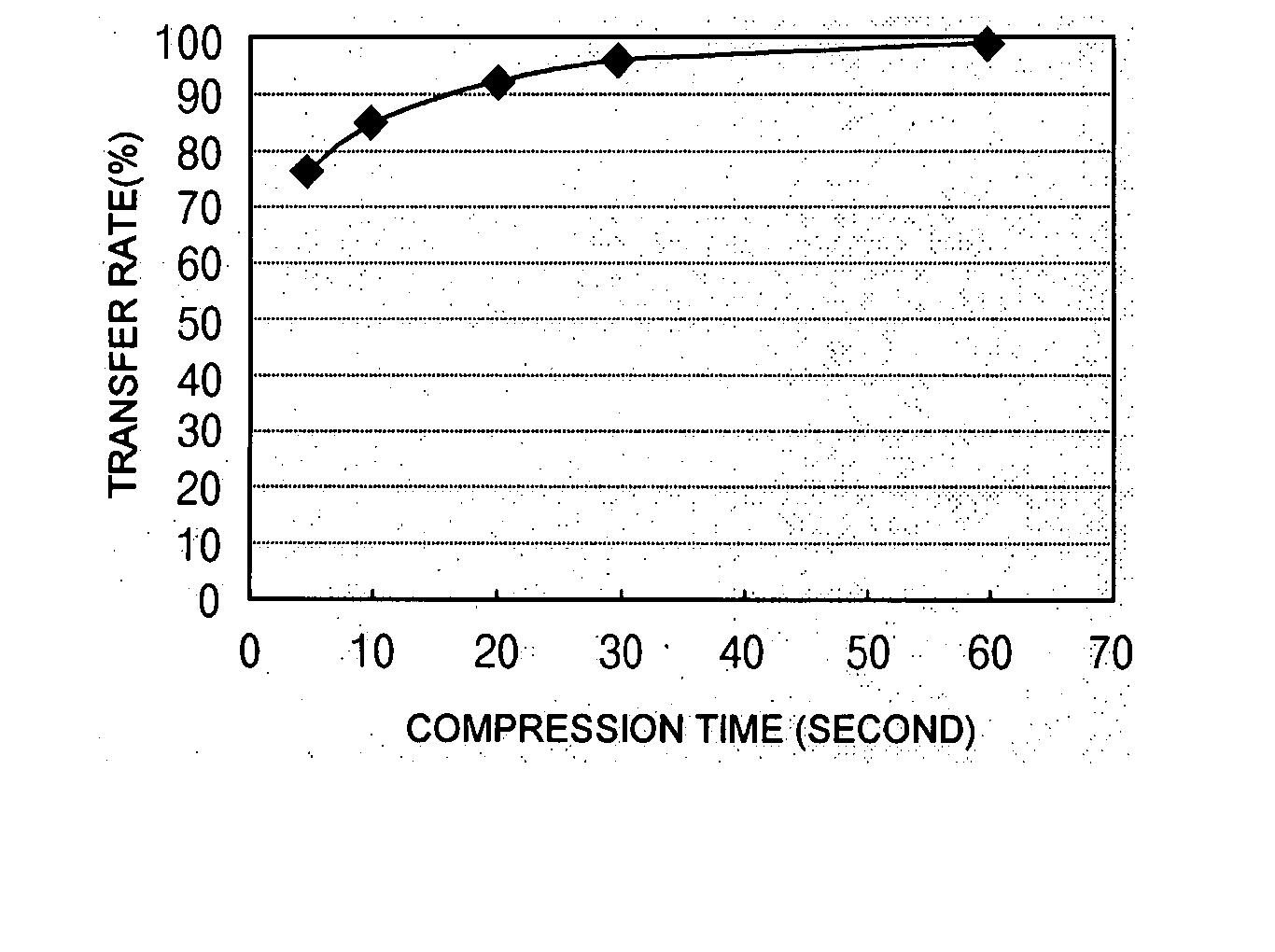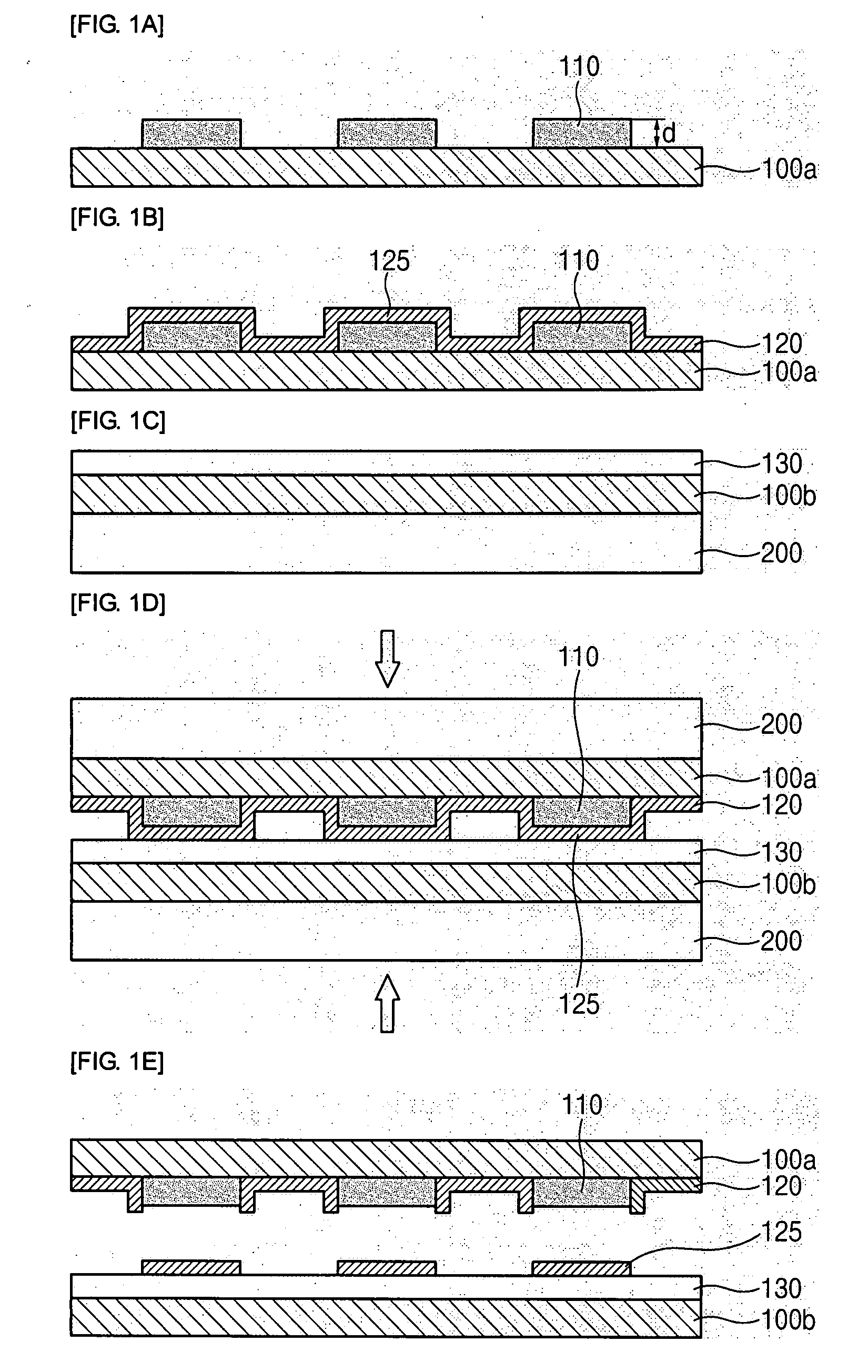Method of manufacturing electrode pattern
- Summary
- Abstract
- Description
- Claims
- Application Information
AI Technical Summary
Benefits of technology
Problems solved by technology
Method used
Image
Examples
first embodiment
[0030] First, a method of manufacturing an electrode pattern according to a first embodiment of the invention will be described with reference to FIGS. 1A to 1E.
[0031]FIGS. 1A to 1E are sectional views sequentially showing a process for explaining the method of manufacturing an electrode pattern according to the first embodiment of the invention.
[0032] As shown in FIG. 1A, a first support film 100a composed of PET, PBT or the like is prepared.
[0033] Next, a mold release pattern 110 is formed on one surface of the first support film 100a, the mold release pattern 110 defining an internal electrode formation region.
[0034] More specifically, the mold release pattern 110 is formed as follows. First, mold release forming liquid is printed in a desired pattern, that is, in a shape of an internal electrode pattern on one surface of the first support film 100a by a printing method such as screen printing, gravure printing, ink-jet printing, laser printing or the like. Next, the printed ...
second embodiment
[0055] Now, a method of manufacturing an electrode pattern according to a second embodiment of the invention will be described with reference to FIG. 5. However, the descriptions of the same components of the second embodiment as those of the first embodiment will be omitted.
[0056]FIG. 5 is a sectional view for explaining the method of manufacturing an electrode pattern according to the second embodiment of the invention.
[0057] The method of manufacturing an electrode pattern according to the second embodiment has almost the same construction as the method of manufacturing an electrode pattern according to the first embodiment. As shown in FIG. 5, however, the method of an electrode pattern according to the second embodiment further includes forming a mold release layer 115 on one surface of the first support film 100a, before the mold release pattern 110 defining an internal electrode formation region is formed on the one surface of the first support film 100a.
[0058] The release...
PUM
 Login to View More
Login to View More Abstract
Description
Claims
Application Information
 Login to View More
Login to View More - R&D
- Intellectual Property
- Life Sciences
- Materials
- Tech Scout
- Unparalleled Data Quality
- Higher Quality Content
- 60% Fewer Hallucinations
Browse by: Latest US Patents, China's latest patents, Technical Efficacy Thesaurus, Application Domain, Technology Topic, Popular Technical Reports.
© 2025 PatSnap. All rights reserved.Legal|Privacy policy|Modern Slavery Act Transparency Statement|Sitemap|About US| Contact US: help@patsnap.com



